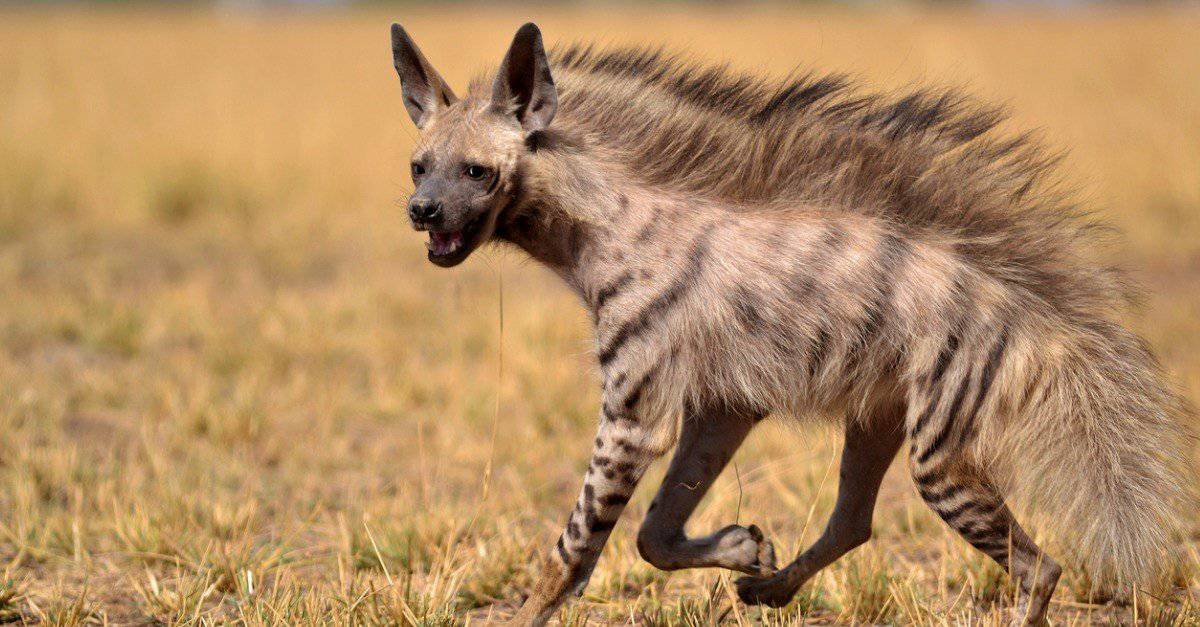
The aardwolf, which means “earth wolf” in Afrikaans, is a fascinating creature that belongs to the hyena family. Despite its name, the aardwolf is not a wolf at all, but a distinct species that has its own unique characteristics. Native to the grasslands and savannahs of eastern and southern Africa, the aardwolf is known for its specialized diet, shy nature, and intriguing behavior.
In this article, we will delve into the world of aardwolves and explore 14 interesting facts about this extraordinary animal. From their peculiar feeding habits to their unusual vocalizations, there is much to discover about these elusive creatures that often go unnoticed in the vast African wilderness. So, let’s embark on this journey and unveil the secrets of the aardwolf!
Key Takeaways:
- Aardwolves are fascinating creatures with unique traits, such as their specialized diet of termites and nocturnal lifestyle, making them elusive and intriguing to study.
- Aardwolves play a crucial role in their ecosystem by controlling termite populations, highlighting the importance of preserving their grassland habitats for long-term survival.
Unique Diet
The aardwolf has a specialized diet consisting mainly of termites. Unlike other hyenas that are known for their scavenging habits, aardwolves prefer to feed on termites and insect larvae, making them insectivores.
Specialized Teeth
Their dental structure is designed for termite consumption. With long, sticky tongues and sharp teeth, aardwolves can easily lap up the terrestrial insects and their nests, consuming thousands of termites in one night.
Solitary Creatures
Aardwolves are primarily solitary animals. They are often found living alone or in monogamous pairs, venturing out independently in search of food.
Preferred Habitat
These animals are predominantly found in open grasslands and bushy savannas of Eastern and Southern Africa. They thrive in areas abundant with termites, their primary food source.
Nocturnal Lifestyle
Aardwolves are nocturnal creatures, preferring to hunt for termites and other insects under the cover of darkness. This helps protect them from their main predators, such as lions and leopards.
Reclusive Nature
Due to their solitary and nocturnal lifestyle, aardwolves are often elusive and rarely seen by humans. Their timid behavior and preference for hiding in burrows during the day contribute to their reclusive nature.
Scent-Marking Behavior
Aardwolves use scent marking as a way to communicate with other members of their species. They have specialized scent glands located on their tail, which they use to mark their territory.
Vocalizations
Although aardwolves are not known for their vocalizations like their relatives, hyenas, they can make a range of sounds including soft growls, snorts, and hisses when threatened or during mating rituals.
Adaptations for Survival
To protect themselves against potential predators, aardwolves have evolved certain adaptations. Their long, sharp claws enable them to dig burrows quickly, while their cryptic coloration allows them to blend in with their surroundings.
Monogamous Mating
Aardwolves are known for their monogamous mating system, where a male-female pair will stay together for multiple breeding seasons. Both parents are involved in raising their offspring.
Gestation and Offspring
After a gestation period of around 90 days, a female aardwolf gives birth to a litter of typically two or three cubs. The cubs are born blind and helpless but quickly develop and gain independence within a few months.
Conservation Status
Although aardwolves are currently classified as a species of “Least Concern” by the IUCN, their population is threatened by habitat loss and destruction. Ensuring the preservation of their grassland habitats is crucial for their long-term survival.
Important Ecological Role
Aardwolves play a vital role in their ecosystem by controlling termite populations. Their feeding habits help maintain a balance between termites and their environment, preventing excessive damage to vegetation.
Aardwolf Myths
In some African cultures, aardwolves have been associated with various myths and beliefs. Some tribes consider them to be symbols of protection, while others believe they bring bad luck.
These are just a few of the many intriguing facts about aardwolves. With their specialized diet, nocturnal habits, and unique adaptations, these remarkable animals continue to inspire awe and interest in the natural world. The 14 facts about aardwolf discussed here shed light on the fascinating features of this elusive and enigmatic creature.
Conclusion
The aardwolf is a fascinating creature that often goes unnoticed due to its nocturnal behavior and shy nature. However, learning about this unique member of the hyena family reveals a world of interesting facts and characteristics. From its specialized diet to its well-developed defense mechanisms, the aardwolf is truly a remarkable animal.Despite its name, the aardwolf is not a wolf at all. Instead, it is a small insectivorous mammal that primarily feeds on termites. Its specialized elongated skull and sticky tongue allow it to extract termites from their nests with ease. With its distinctive striped fur and sloping back, the aardwolf possesses a unique appearance that sets it apart from other hyenas.While the aardwolf may not be as well-known as its larger hyena relatives, it plays a critical role in its ecosystem. By controlling termite populations, it helps maintain the balance of its habitat and contributes to the overall health of the ecosystem.In conclusion, the aardwolf is a remarkable creature that deserves recognition for its specialized adaptations and important ecological role. By delving into the fascinating facts surrounding the aardwolf, we can gain a deeper appreciation for this often overlooked member of the animal kingdom.
FAQs
What does the aardwolf eat?
The aardwolf primarily feeds on termites. Its specialized skull and sticky tongue allow it to extract termites from their nests with ease.
Where do aardwolves live?
Aardwolves are native to the grasslands and savannas of eastern and southern Africa.
Are aardwolves social animals?
While aardwolves are generally solitary animals, they may form small family groups consisting of a monogamous pair and their offspring.
Do aardwolves have any predators?
Aardwolves have a few natural predators, including large carnivores such as lions and hyenas. However, their mainly nocturnal behavior and burrowing habits help protect them from predation.
Can aardwolves spray a defensive fluid like skunks?
No, aardwolves do not possess the ability to spray a defensive fluid like skunks. Instead, they rely on their cryptic coloration and secretive nature to avoid predators.
Was this page helpful?
Our commitment to delivering trustworthy and engaging content is at the heart of what we do. Each fact on our site is contributed by real users like you, bringing a wealth of diverse insights and information. To ensure the highest standards of accuracy and reliability, our dedicated editors meticulously review each submission. This process guarantees that the facts we share are not only fascinating but also credible. Trust in our commitment to quality and authenticity as you explore and learn with us.


